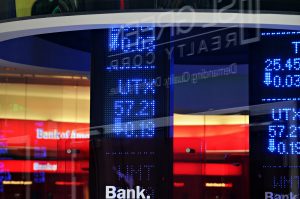Happy New Year and I hope that you all managed to have a relaxing festive period. As always seems to be the case, it feels like a lifetime ago now! For this review, we will have a quick look back at December, as well as giving a brief overview of how the year panned out for the major investment indices.
As we reported in last month’s review, the Bank of England (BoE) raised the base rate to 3.5%, a 50 basis points increase. This was the ninth consecutive increase for the key base rate here in the UK. Interestingly, the monetary committee were not all in agreement, with one official calling for a 75-basis increase and two others voting for no change. There was a slight decrease in the inflationary figures in November. The annualised rate of consumer price inflation fell to 10.7% from 11.1% in October. A small comfort, but prices have still risen at the most rapid rate for over 40 years.
During December, both the FTSE 100 Index and FTSE 250 Index fell by 1.6%. However, when you look at 2022 as whole, there was a marked difference in their performance. The FTSE 100 Index saw a very small increase of 0.9%, whereas the FTSE 250 Index declined by 19.7%. In large part, this is because the FTSE 250 Index is far more aligned with our domestic economy, where the FTSE 100 Index is more international. During 2022, the pound weakened against the US dollar, finishing at US$1.21 from US$1.35. Of course, during the year the pound was far lower, and has recovered somewhat.
Despite the UK economy growing by 0.5% in October, overall, in quarter 3 The Office for National Statistics advised that GDP fell 0.3% compared to quarter two. This was slightly worse than the expectation of a 0.2% contraction.
Over in the US

The Federal Reserve (Fed) increased their key interest rate by 50 basis points, meaning this was the seventh rise in 2022. However, this did show a slight loosening in their monetary tightening as the previous four rises had been at 75 basis points. The inflationary pressures in the US seem to show signs that the peak has been reached, as November saw their year-on-year rate fall to 7.1% from 7.7% in October. During December the Dow Jones Industrial Average Index dropped by 4.2% and by 8.8% over the course of the year. The S&P 500 Index fell by 19.4% over 2022, which was its worst year since 2008.
In Europe
Continuing the trend of increasing interest rates, the European Central Bank (ECB) raised its rates by 50 basis points to 2%. It is now expected for the ECB’s inflation rate to stay above its target of 2% until 2025. The President of the ECB advised “We’re not slowing down. We’re in for the long game”. The German’s Dax Index fell by 3.3% in December and by 12.3% in 2022.
In Japan

The Bank of Japan (BoJ) surprised markets by announcing that it would relax the cap it imposes on long-term yields from ±0.25% to ±0.50%. This saw a selloff in the Japanese bond markets. However, the BoJ remains largely on its own over monetary policy, as once again it didn’t raise interest rates, in direct contrast to the other central banks in the developed markets. The Nikkei 225 Index fell by 6.7% during December and by 9.4% during the year.
I am hopeful, that despite the falls in the markets in December, we are starting to see a more positive outlook. It does appear that the global inflationary issues are abating but are of course still extremely high. With this, it may well be that the rapid rises in interest rates could be nearing an end, as was seen with the Fed’s last rise. There is a long way to go and I am sure that there will still be some news that could have a downward effect on the markets during this year. But let’s hope that 2023 sees some growth on the portfolios and sees the long-term outlook of the investments start to pay dividends.
As ever, if you have any concerns regarding your investments, please do not hesitate to contact us by calling +44 (0) 29 2067 5204/ +44 (0) 7917 390 344 or emailing richard.brazier@hanoverfm.co.uk and we will be happy to talk to you.
